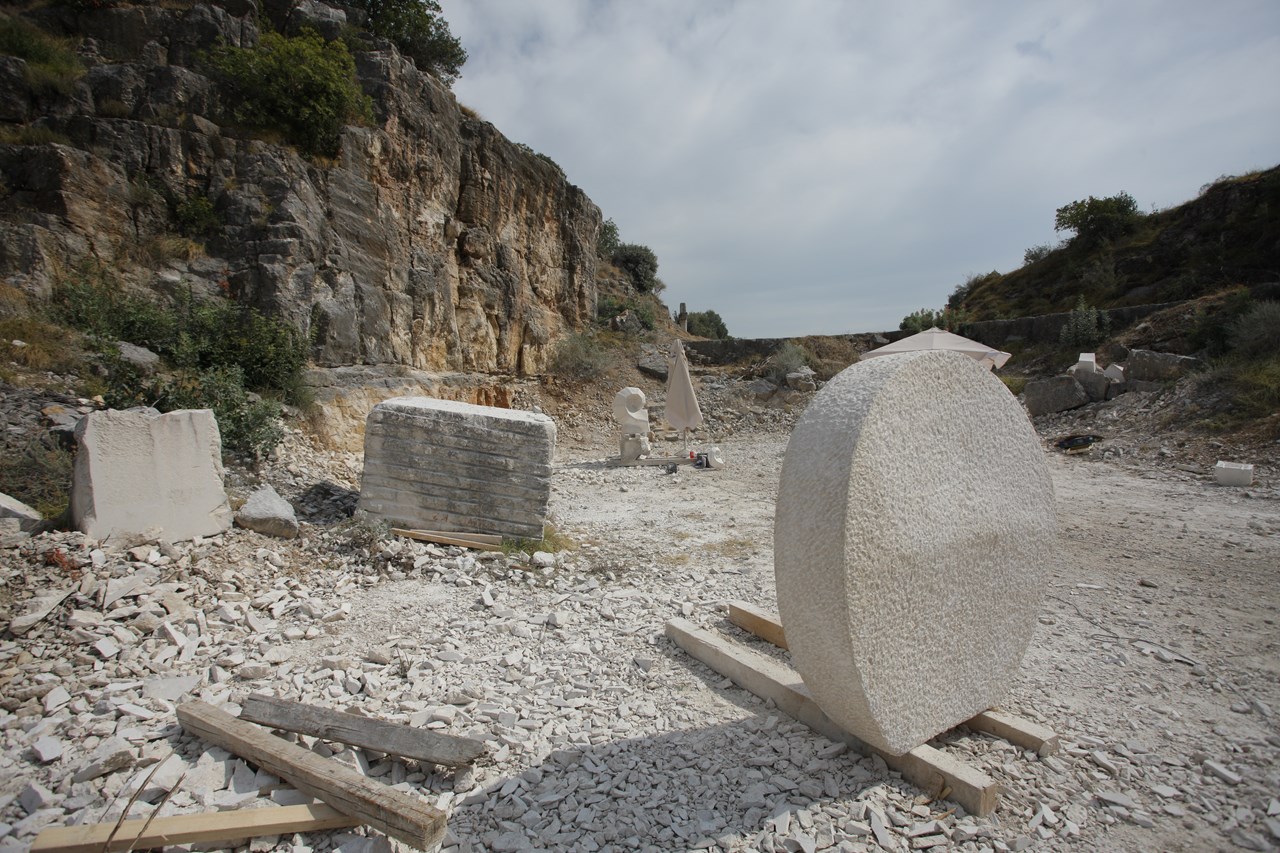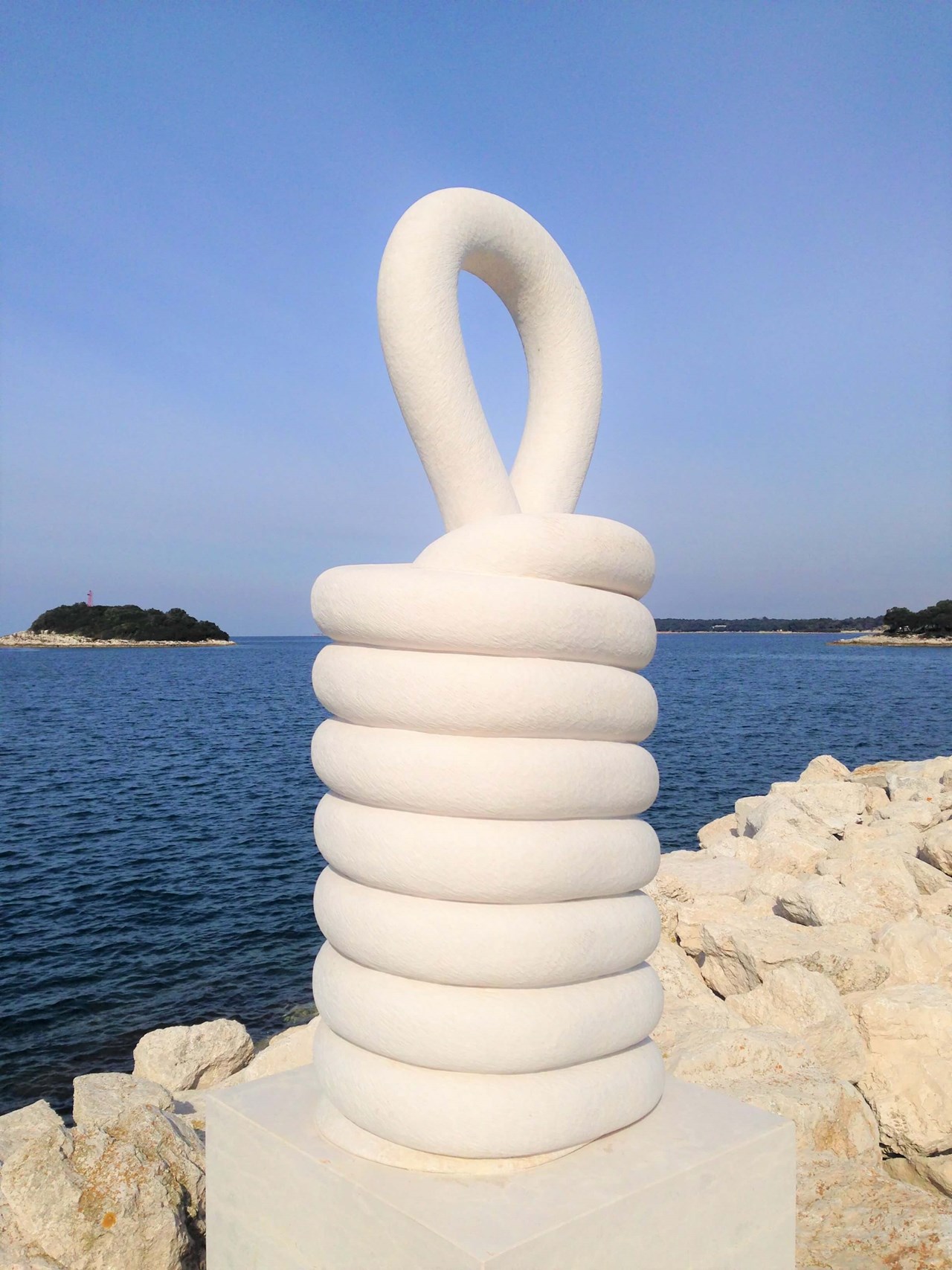

The Montraker quarry is situated on a peninsula to the northwest of the old town centre of Vrsar (on the northwestern side of the church and the old Benedictine Abbey of St Mary). Due to its size, location and historical significance, it is surely the most significant stone deposit in the area around Vrsar.
From Vrsar's quarries the famous Vrsar stone, the material many of the most significant buildings in Venice are built from was mined.

It was exploited from prehistory until the middle of the 20th century. It was there that the famous Vrsar stone, the material many of the most significant buildings in Venice – but also across Europe and the world – are built from was mined.
The abandoned cliffs of Montraker bear witness to its extraordinary economic significance and segment of the stone crafting industry, which amounted to 15 % in the total income of Vrsar throughout history. Today it is an inspiring place for holding various events and shows.
Stone has been extracted from that place since probably as early as ancient history, while the stone from the quarry was used for the construction of Roman buildings around the wharf of Vrsar (horreum, villa rustica on the location of today’s Church of St Mary) and the Roman wharf itself. The continuity of stone extraction can be followed for the whole duration of the Duchy of Vrsar (until 1778), the short-lived Venetian reign (1778-1797), the French administration (1806-1813) and the Austrian rule (1797-1806 and 1813-1918) through the Italian (1918-1943) and German (1943-1945) occupation to the period of Yugoslavia (since 1945). The Montraker quarry is considered to be an ancient stone deposit and exploitation area of Vrsar.

The abandoned cliffs of Montraker bear witness to its extraordinary economic significance and segment of the stone crafting industry.
Originally, Montraker was certainly not a single quarry, but rather consisted of several smaller exploitation zones which, were, as it seems, merged into one quarry during the late Austrian rule in the 19th century or during the Italian occupation (1918-1943). On the location of today’s abandoned quarry there was once a large hill with the same name, comparable to the hill of Vrsar on which the old town centre of Vrsar sits with regard to its height and circumference.
The material obtained from that place belongs geologically to the Upper Jurassic Period (J33). It is a markedly hard type of limestone, with a light grey colour, appearing in layers up to 2 m thick and with thin lumps of greenish feldspar. When chroniclers and archival sources speak of veins of blue stone from Vrsar, they usually refer to the stone that used to be extracted from the deposit at Montraker. The methods of stone exploitation at Montraker remained identical or similar for centuries, and changed only once dynamite mining techniques were introduced.
The stone obtained in Montraker was used for the construction of the Mestre railway bridge (Il ponte feroviario Mestre fra Veneia e la terraferma) in the 1840s (completed in 1946). The bridge is 3,601 m long, with 234 arcades, each spanning 8 m, while the Vrsar stone was used for the cladding of the bridge structure made from brick. For the transport of stone from Montraker, 46 boats and 14 ships were used permanently[1].
That exploitation project was the most significant and most comprehensive episode of Vrsar stone extraction. The view from the Vrsar hill to the northwest reveals the abandoned Montraker quarry, a sort of “Vrsar stone desert”. Edo Murtić (1921-2005), a famous Croatian painter and ceramicist, experienced a renewed impetus in his abstract opus in the 1990s, inspired and provoked by none other than the Montraker quarry. Until 2000, he painted his “Montraker” series – scenes from the abandoned quarry – in large formats, with intensive colours, open gestures and symbols. Murtić considered Montraker to be his favourite motif; he frequently visited and observed it from his nearby studio in Vrsar.
[1] CENNI STORICI DI G. GERLIN, 1853.
The ancient abandoned stone quarries should also be added up to the sights of Vrsar. In the Vrsar quarries the stone has been obtained ever since Roman times. Within easy reach of the basilica of St. Marv. on the islets offshore there are remains of abandoned quarries (e.g. on the top of the islet St. George). Some art historians brought up a theory that maybe the monumental and monolithic cupola of the East Gothic king Theodore the Great’s (493-526) mausoleum in Ravenna (having a diameter of 10.76 m and weighing 230 t) is made of the rock broken off the top of that islet. (The archaeologist and historian Dr. Ante Šonje is of the opinion that the cupola originates from a quarry south of Poreč).
In Vrsar quarries the stone has been obtained ever since Roman times

On the peak Gavanov Vrh (Ital. Monte Ricco) east of Vrsar there is also an abandoned quarry, as well as on a hill north-east of Vrsar. High-quality grey stone (Aurac) has been obtained here ever since Romanesque times. The quarries around Vrsar and Rovinj were exploited to the most extent during the long rule of the Venetian Republic in Istria (from the 13th to the 18th century).

The high-quality stone from Vrsar (pietra di Orsera) was especially used in Venice.